¿Cuánto suele costar una instalación solar?
Cambiar a energía solar es una inversión importante, y una de las preguntas más frecuentes de los propietarios es: ¿cuánto suele costar una instalación solar ? Con la creciente popularidad de las energías renovables, comprender el aspecto financiero de la instalación de paneles solares es más crucial que nunca. En esta guía completa, exploraremos los diversos factores que influyen en el precio de una instalación solar , desde el tamaño del sistema hasta la ubicación y las opciones de financiación. Tanto si está calculando el presupuesto para una pequeña instalación en el tejado como si está planeando un sistema residencial de gran tamaño, este artículo le brindará claridad y confianza.
- Comprender los conceptos básicos de una instalación solar
- Coste medio de una instalación solar en 2025
- Incentivos federales y estatales para la instalación de energía solar
- Opciones de financiamiento para una instalación solar
- Comparación entre instalación solar profesional y casera
- Costos ocultos y consideraciones en una instalación solar
- ¿Cuánto dinero le ahorrará una instalación solar?
- Casos prácticos reales: Costos de instalación de energía solar por región
- Instalación solar para hogares fuera de la red eléctrica frente a hogares conectados a ella
- Cómo elegir la empresa de instalación solar adecuada
- Consejos para reducir el coste de instalación de energía solar
- ¿Vale la pena invertir en una instalación solar?
Comprender los conceptos básicos de una instalación solar
Antes de profundizar en los detalles de costos, es importante comprender qué incluye una instalación solar . Una configuración estándar suele constar de:
Paneles solares (monocristalinos o policristalinos)
Inversor (convierte la energía solar CC en electricidad CA)
Sistema de montaje (montaje en techo o suelo)
Almacenamiento de batería (opcional pero cada vez más común)
Cableado y componentes eléctricos
Software de monitorización
Mano de obra de instalación
La combinación de estos elementos influirá significativamente en el coste de su instalación solar .
Coste medio de una instalación solar en 2025
Rango de precios de instalación solar residencial
En promedio, a partir de 2025, el costo de una instalación solar residencial en EE. UU. oscila entre $2.50 y $3.50 por vatio . Esto significa:
Sistema de 4 kW : $10,000 – $14,000
Sistema de 6 kW : $15,000 – $21,000
Sistema de 10 kW : $25 000 – $35 000
Estos precios son antes de incentivos , descuentos o créditos fiscales.
Factores que afectan el costo de una instalación solar
Tamaño del sistema
Cuanto más grande sea el sistema, mayor será su costo, pero también mayor será la energía que genere. El costo por vatio suele disminuir a medida que aumenta el tamaño del sistema.
Tipo de panel y marca
Los paneles premium (como SunPower o REC) ofrecen una mejor eficiencia pero tienen un precio más elevado.
Tipo de inversor
Los inversores de cadena son más baratos, mientras que los microinversores o inversores híbridos (compatibles con baterías) cuestan más pero ofrecen mejor rendimiento y monitorización.
Tipo y estado del techo
Los techos complejos (inclinados, de tejas, sombreados) pueden aumentar los costos de mano de obra para su instalación solar .
Ubicación
Los precios varían ampliamente según la región debido a las tarifas laborales, los requisitos de permisos y la disponibilidad de energía solar.
>>Ver también ¿Realmente vale la pena la energía solar?
Incentivos federales y estatales para la instalación de energía solar
Crédito Fiscal a la Inversión Federal (ITC)
En 2025, los propietarios de viviendas aún podrán beneficiarse del Crédito Fiscal Federal para Energía Solar del 30% . Esto reduce significativamente el coste total de su instalación solar . Por ejemplo:
Costo del sistema de $20,000
Crédito del 30% = $6,000 de ahorro en impuestos
Costo neto = $14,000
Incentivos estatales y locales
Dependiendo de su estado, usted puede calificar para:
Reembolsos
Políticas de medición neta
Exenciones de impuestos sobre la propiedad
Exenciones del impuesto sobre las ventas
Estos pueden reducir el costo de su instalación solar en miles de dólares.
Opciones de financiamiento para una instalación solar
Compra en efectivo
Ideal para ahorros a largo plazo y máxima rentabilidad. Sin intereses ni cuotas mensuales.
Préstamos solares
Los préstamos a bajo interés hacen que la energía solar sea asequible sin grandes pagos iniciales. El ahorro mensual en electricidad suele cubrir el pago del préstamo.
Arrendamientos solares y PPA
Usted paga una tarifa fija mensual o por kWh por el uso de energía solar, mientras que un tercero es propietario y mantiene el sistema.
Consejo: Ser propietario (en efectivo o con préstamo) le da derecho a incentivos. El arrendamiento generalmente no.
Comparación entre instalación solar profesional y casera
Instalación solar de bricolaje
Costo: 30-50% más bajo
Responsabilidad: Permisos, inspecciones, diseño de sistemas, instalación.
Riesgo: Una instalación incorrecta puede anular las garantías o violar los códigos.
Instalación solar profesional
Costo: más alto por adelantado
Ventaja: Garantía, experiencia, rapidez, aprobación de servicios públicos, gestión de permisos.
Valor a largo plazo: rendimiento y mantenimiento confiables
Para la mayoría de los propietarios de viviendas, la instalación solar profesional es la ruta más segura y valiosa.
Costos ocultos y consideraciones en una instalación solar
Reparación o reemplazo de techo
Si su techo es viejo, es posible que sea necesario reemplazarlo antes de instalar los paneles, lo que agregaría entre $5,000 y $10,000 al costo total.
Permisos y tarifas de inspección
Los permisos e inspecciones municipales pueden costar entre $500 y $2000 dependiendo de su área.
Mantenimiento
Los sistemas solares requieren poco mantenimiento, pero conviene presupuestar una limpieza ocasional, el reemplazo del inversor (aproximadamente entre 10 y 15 años) y el monitoreo.
¿Cuánto dinero le ahorrará una instalación solar?
Ahorros mensuales
Dependiendo de su tarifa de electricidad y consumo, podría ahorrar entre $50 y $250 por mes.
Período de recuperación
La mayoría de los propietarios alcanzan el punto de equilibrio en 6 a 10 años . Después, la electricidad es prácticamente gratuita durante otros 15 a 20 años.
Aumento del valor de la vivienda
Las casas con energía solar se venden más rápido y a un precio más elevado: los estudios sugieren un aumento de $15,000 en el valor de reventa para una instalación solar de tamaño mediano.
Casos prácticos reales: Costos de instalación de energía solar por región
California
Sistema promedio de 6 kW: ~$17,000
Después de incentivos: ~$11,900
Tarifas eléctricas altas = retorno rápido de la inversión
Texas
Sistema promedio de 6 kW: ~$15,500
Después de incentivos: ~$10,800
La medición neta varía según el proveedor
Florida
Sistema promedio de 6 kW: ~$14,000
Después de incentivos: ~$9,800
Gran recurso solar, menos regulaciones
Estos ejemplos del mundo real muestran cómo los precios de instalación solar varían según la ubicación.
Instalación solar para hogares fuera de la red eléctrica frente a hogares conectados a ella
Sistemas conectados a la red
Menor costo
Acceso a la medición neta
No requiere pilas
Sistemas fuera de la red
Cuesta entre 2 y 3 veces más debido a las necesidades de almacenamiento de la batería
Independencia energética completa
Requiere un diseño robusto y mantenimiento
Para la mayoría de los propietarios de viviendas, una instalación solar conectada a la red ofrece el mejor retorno de la inversión.
>>Vea también ¿Cómo se compara una batería de 12 V 100 Ah con una batería de 1 kWh?
Cómo elegir la empresa de instalación solar adecuada
Preguntas clave que debe hacerse
¿Tiene licencia y seguro?
¿Ustedes manejan permisos e inspecciones?
¿Qué garantía ofrecen en mano de obra y componentes?
¿Puede proporcionarme referencias de clientes anteriores?
Banderas rojas
Presión para firmar rápidamente
Comillas vagas o cambiantes
Falta de transparencia en las condiciones contractuales
Obtenga siempre varias cotizaciones y compárelas.
Consejos para reducir el coste de instalación de energía solar
Compare precios y al menos tres cotizaciones
Pregunte sobre programas de compra grupal o cooperativas solares.
Considere paneles ligeramente menos eficientes para reducir costos
Programe su instalación cuando los reembolsos estatales estén activos
Explora las organizaciones locales sin fines de lucro que ofrecen asistencia
¿Vale la pena la instalación de energía solar?
La respuesta casi siempre es sí , especialmente con el aumento de los precios de la electricidad y los generosos incentivos. Una instalación solar profesional puede proporcionar décadas de energía limpia y económica, e incrementar significativamente el valor de su propiedad. Si bien los costos iniciales pueden oscilar entre $10,000 y $30,000 o más, la mayoría de los propietarios recuperan su inversión en una década.
Al considerar sus opciones, tenga siempre en cuenta tanto los gastos a corto como los ahorros a largo plazo. Recuerde que la instalación de energía solar no se trata solo de hardware, sino también de planificación financiera, independencia energética y responsabilidad ambiental.
Al final, comprender cuánto cuesta normalmente una instalación solar le permitirá tener el control de un futuro más brillante y sostenible.

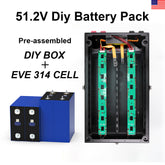

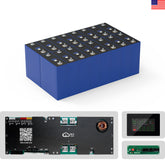

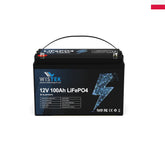
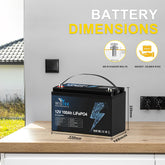

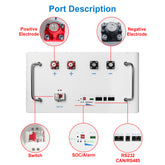
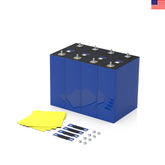
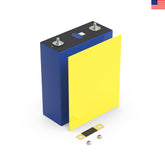
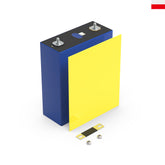

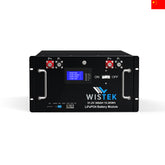
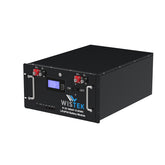
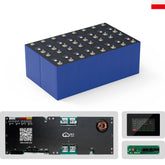








Leave a comment
All blog comments are checked prior to publishing